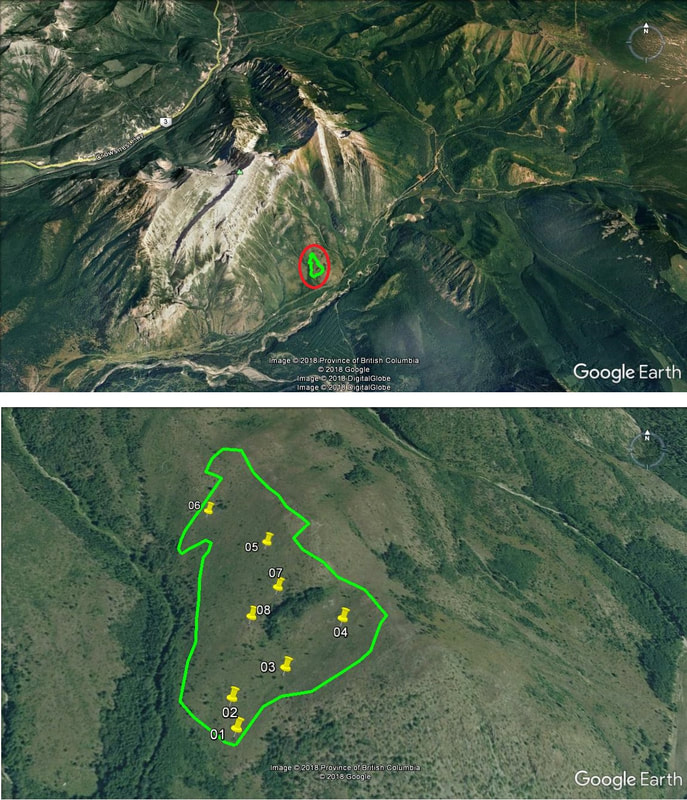Limber pine is an uncommon 5-needle pine tree, only known to occur in a small number of locations within British Columbia (BC), including a few stands in in the Crowsnest Pass Region, stands near Elko, a major population along Columbia Lake that extends north to the Radium area, and another large population in the Kicking Horse Canyon near Golden. Throughout its range in BC, limber pine is primarily found on warm aspects, calcareous soils, talus slopes, and limestone outcrops (Pigott and Moody, 2013).
Limber pine is a red-listed species in BC and is designated as endangered by the Committee on the Status of Endangered Wildlife in Canada (COSEWIC). Limber pine is a conservation concern due to several factors, including (Pigott and Moody, 2013):
- White pine blister rust, a disease caused by the fungus Cronartium ribicola, which enters through the needles of the tree, moving down the branch to the main stem where it girdles and slowly kills the tree;
- Mountain pine beetle;
- Fire suppression;
- Climate change; and
- Human development.
Several strategies are used to conserve and recover limber pine, one of which is planting. Planting is considered to be one of the more productive restoration activities (Pigott and Moody, 2013). On September 3, 2016, 11 members of the Rocky Mountain Naturalists (RMNats), 3 members of the Elk River Alliance, and a member of the Nature Conservancy of Canada (NCC), planted limber pine seedlings on south and west facing grassland slopes on Mount Broadwood, a conservation property managed and owned by NCC. A total of 1,180 seedlings were planted within approximately 6 hectares.
Two years following the planting, on September 8, 2018, 9 members of the RMNats and a member of NCC, returned to the site to assess survival success of the seedlings using randomly located 5.99 m radius plots within the 6 hectare planting site. Within each 5.99 m radius plot, the number of alive and dead seedlings found were to be recorded (Figure 1). From there, an average number of surviving seedlings per hectare could be calculated.
A total of 8 radius plots were conducted within the planting site (Figure 2). Unfortunately, no seedlings were found to be alive. The harsh conditions of the planting site as well as two consecutive drought years are suspected to have contributed to mortality. Summer drought is becoming more common and must be considered while planning recovery activities, such as planting. Although mortality was 100%, monitoring of the site was critical to discover the seedlings had died and also evaluate what may have contributed to their death. This information will inform future limber pine planting initiatives in the region.
A big thank you goes out to the RMNat members who participated in the 2016 planting and 2018 monitoring events. Your efforts are aiding in the recovery of the endangered limber pine tree in BC.
Reference:
Pigott, D. and R. Moody. 2013. The Loneliest Pine. Limber Pine in British Columbia, Factsheet 2. Forest Genetics Council of BC. Available at: http://www.fgcouncil.bc.ca/LimberPine-BC-Factsheet2-April2013.pdf.


 RSS Feed
RSS Feed
